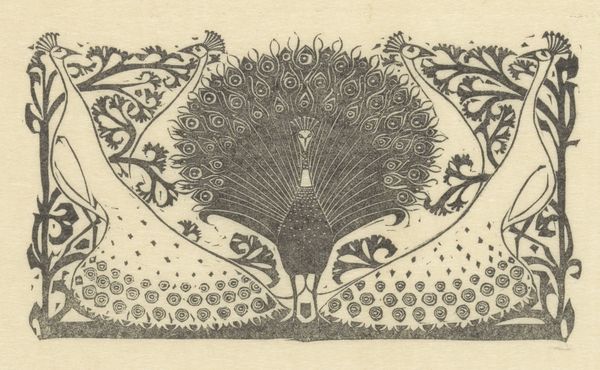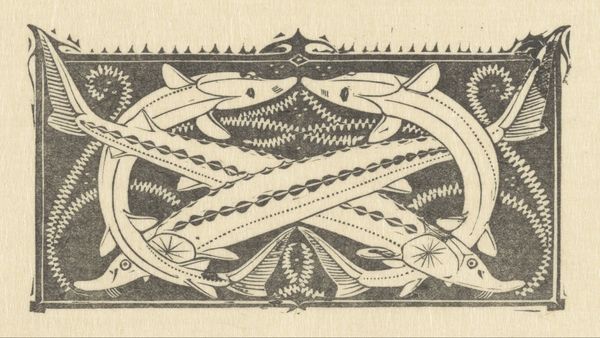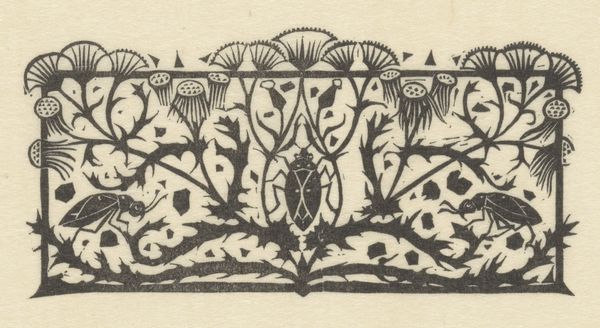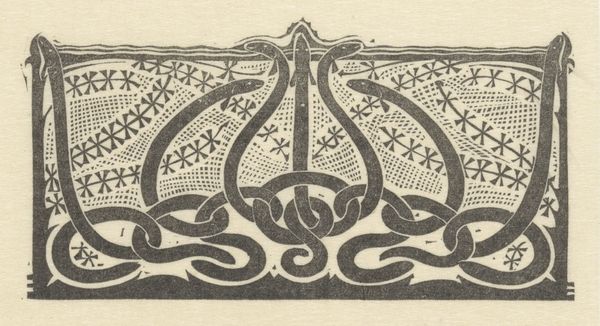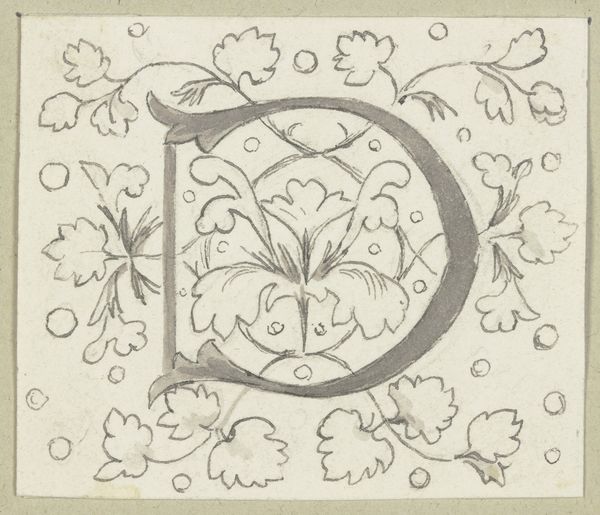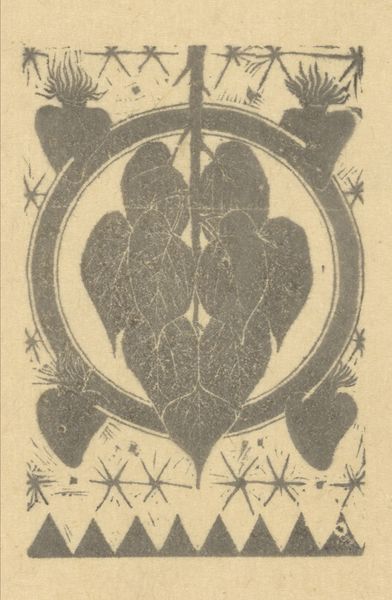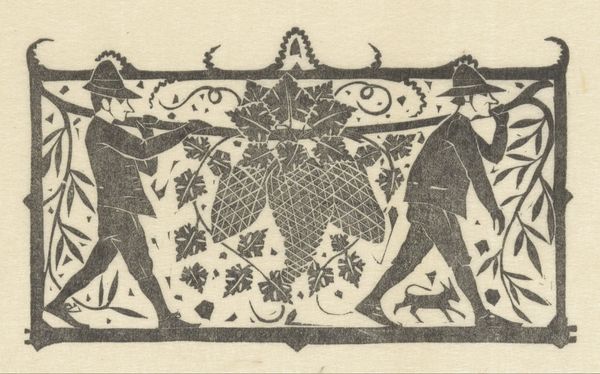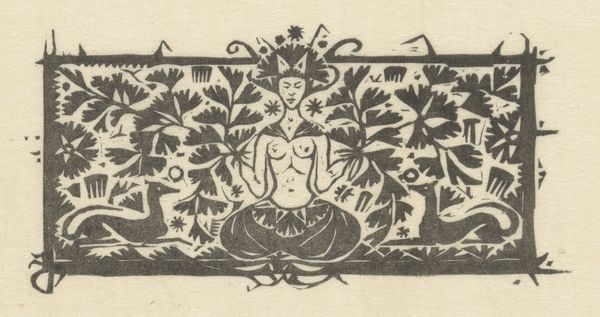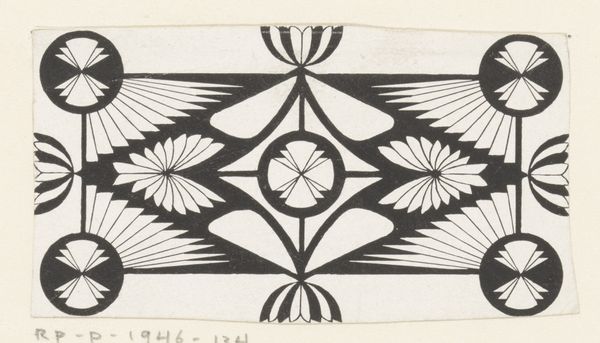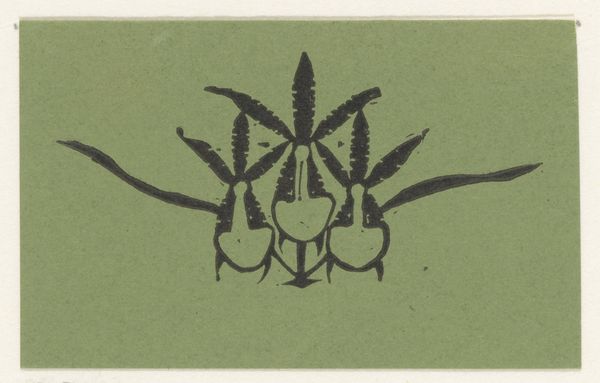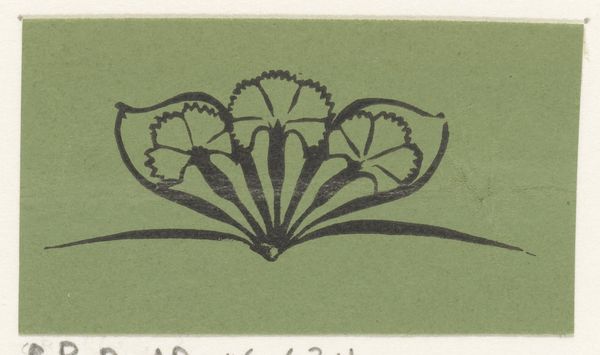
graphic-art, print, woodcut
#
graphic-art
#
art-nouveau
#
pen drawing
# print
#
geometric
#
woodcut
#
line
Dimensions: height 50 mm, width 114 mm
Copyright: Rijks Museum: Open Domain
Editor: So, here we have Dijsselhof's "Titelhoofd met lieveheersbeestjes" – that translates to Title Page with Ladybugs, made between 1893 and 1927. It's a woodcut and pen drawing. What strikes me is how the rigidity of the geometric forms contrasts with the natural subject matter. What's your take on it? Curator: Well, let's consider the material reality. This is a print, a medium that inherently democratizes art by its reproducibility. Dijsselhof, choosing woodcut, a relatively accessible and hands-on technique, points towards a questioning of the separation between high art and craft, don’t you think? How might its initial function as a "title page" be related to commodity culture? Editor: I see your point. Woodcut *is* more accessible. But I hadn't really thought about the title page aspect. I suppose it suggests it was intended to adorn a book, maybe something mass-produced? Curator: Exactly! Consider the social context: late 19th, early 20th century, Art Nouveau. There’s an impulse to bring beauty to everyday objects, to aestheticize the material world. These weren’t unique masterpieces for a wealthy elite, but repeatable images consumed by a broader audience. Does this challenge your initial perception of rigidity? Editor: I suppose so. The rigidity feels more deliberate now, like a stylized aesthetic choice geared towards production. Curator: Furthermore, think about the labor involved. The artist as a craftsman, meticulously carving the wood, actively involved in the means of production, rather than removed, simply dictating terms. What does the symbolism of the ladybugs combined with the geometric shape say about nature in the age of industrialization? Editor: It does make you rethink what he’s saying about bringing nature back to the masses… by representing it in this particular stylized manner. Thanks, I now see a whole different perspective on this! Curator: Indeed. Thinking through materiality and context can reshape how we understand and value art.
Comments
No comments
Be the first to comment and join the conversation on the ultimate creative platform.
